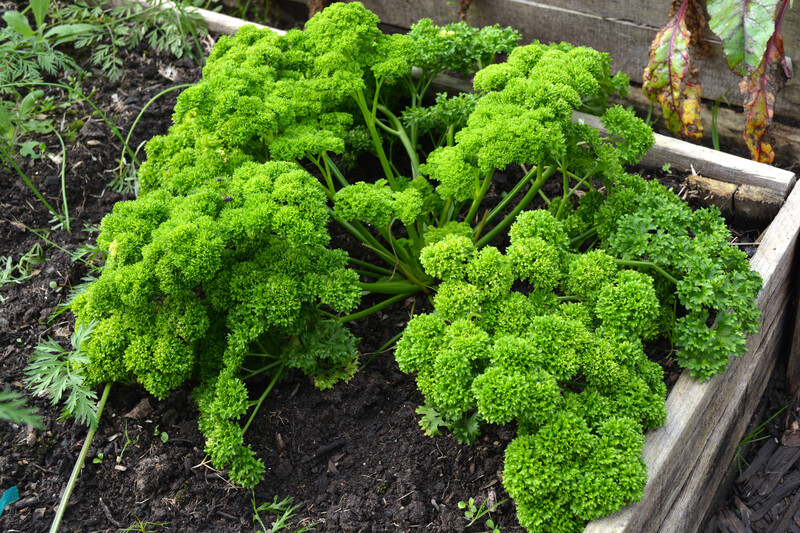Your Path to a Lush Garden: 9 Essential Tips for Beginners
Posted on 24/05/2025
Your Path to a Lush Garden: 9 Essential Tips for Beginners
Dreaming of a vibrant and lush garden oasis? Starting your gardening journey can seem overwhelming, but with the right gardening advice for beginners, anyone can grow a healthy, thriving garden. Whether your goal is a lush flower bed, a bountiful vegetable patch, or simply a green retreat, following some key tips will help you achieve it. In this comprehensive guide, we'll explore the 9 essential steps every beginner should know for creating a beautiful, flourishing garden right at home.
Why Creating a Lush Garden is Rewarding
Building a lush garden isn't just about curb appeal. Gardening nurtures your mind and body, improves air quality, and provides a relaxing, productive hobby. Plus, nothing beats the sense of achievement you'll feel when your hard work blossoms into a vibrant display of colors, textures, and fragrances. Ready to dig in? Let's get started on your journey towards a rich and abundant garden.

1. Know Your Garden's Environment
Assess Sunlight, Shade, and Climate
The first step to lush gardening success is understanding the natural environment you're working with. Observe how sunlight moves through your space during the day, noting sunny, partly-shaded, and shaded areas. Some plants crave direct sunlight, while others thrive in dappled or full shade.
- Sun-loving plants (like tomatoes and roses) need at least 6 hours of sunlight daily.
- Shade plants (such as ferns and hostas) do best with less direct sun.
Pay close attention to your region's temperature range and rainfall patterns. Familiarizing yourself with the USDA hardiness zone or equivalent climate zone ensures you select plants well-suited to your location's conditions, giving your garden a flourishing start.
2. Start with the Right Soil
Improve Soil Health for Lush Growth
Soil is the life force of any lush and healthy garden. Before you plant anything, examine your soil's texture and health:
- Clay soils hold moisture but may drain poorly.
- Sandy soils drain quickly, often drying out fast.
- Loamy soil is ideal--dark, crumbly, and nutrient-rich.
A simple soil test kit from a garden store can reveal pH and nutrient levels. Most plants prefer neutral to slightly acidic soil (pH 6-7). If your soil is lacking, amend with organic matter like compost or well-rotted manure. Over time, mulching with leaves or grass clippings helps retain moisture and improve fertility.
3. Choose the Right Plants for Beginners
Opt for Easy-to-Grow Flowers and Edibles
Not all plants are created equal--especially for novice gardeners. Beginners often find success with resilient, low-maintenance plants. Here are a few excellent starter options:
- Marigolds, cosmos, and sunflowers: Colorful, drought-resistant annual flowers.
- Hostas and daylilies: Hardy perennials that thrive with little fuss.
- Herbs (basil, mint, chives): Adaptable to containers or garden beds and great for the kitchen.
- Leafy greens (lettuce, spinach): Quick harvest and forgiving for first-time growers.
Local nurseries often highlight regionally-suited plant varieties--don't hesitate to ask for advice or browse for inspiration!
4. Master the Art of Planting
Proper Planting Techniques for Success
Knowing when and how to plant is crucial for a thriving, lush garden. Follow these tried-and-true steps:
- Read plant tags or seed packets: They indicate ideal planting depth, spacing, and sunlight requirements.
- Diversify: *Mix various heights and textures* to make your garden visually appealing.
- Don't plant too deep or too shallow: Most plants should be even with the ground surface.
- Loosen roots gently: For transplants, tease out bound roots to help plants settle in.
- Water lightly after planting to settle soil and encourage root contact.
Planting at the right time--usually spring or fall--gives young roots the best chance of thriving.
5. Water Wisely
Best Practices for Robust Growth
Water is vital for cultivating a lush garden, but overwatering can be just as harmful as under-watering. Smart watering techniques will keep your plants hydrated and healthy:
- Water early in the morning: Reduces evaporation and helps prevent fungal diseases.
- Avoid overhead sprinkling: Use a soaker hose or drip irrigation to direct water to roots.
- Check soil moisture: Insert a finger 1-2 inches deep--if dry, it's time to water.
- Mulch garden beds: Retains moisture and suppresses weeds (see Tip #7 for more on mulching).
6. Feed for a Flourishing Garden
Fertilizer and Organic Options
For lush, vibrant growth, your plants need nutrients--especially if your soil is lacking. Here's how to ensure they get what they need:
- Start with compost: Provides a gentle, sustainable nutrient boost.
- Consider slow-release fertilizers: These feed plants over months, making care easier for busy beginners.
- Don't over-fertilize: Too much can burn roots or stimulate weak, leggy growth.
- Pick the right formula: Fast-growing flowers may enjoy a general-purpose fertilizer, while vegetables might need higher phosphorus for root and fruit development.
7. Control Weeds Naturally
Maintain a Clean, Healthy Garden Bed
Weeds compete with your plants for moisture, light, and nutrients, threatening the lushness of your plot. Early, consistent action keeps weeds at bay:
- Remove weeds by hand or with a hoe: Get the roots to prevent regrowth.
- Apply mulch: A thick layer of organic mulch (like bark, straw, or leaves) blocks sunlight, discouraging weeds and retaining soil moisture.
- Stay vigilant: Inspect your garden weekly. Young weeds are easier to eliminate than mature ones!
Using natural and organic mulch materials helps preserve soil health and supports a lush, green appearance all season long.
8. Prune and Deadhead Regularly
Encourage Health and New Growth
Pruning and deadheading are essential for creating a lush, full garden. This basic maintenance task has big payoffs:
- Deadhead spent blooms: Removing faded flowers encourages plants to rebloom and focus energy on growth, not seeds.
- Prune broken or diseased branches: This prevents disease and shapes shrubs or perennials for maximum beauty.
- Don't over-prune: Know your plants' habits--some need shaping in spring, others after flowering.
Regular attention will keep your garden lush, tidy, and productive.
9. Keep Learning and Experimenting
Grow Your Garden Knowledge
Every great gardener was once a beginner. Gardening is a lifelong learning experience--don't be afraid to try new plants or techniques! Here's how to keep improving:
- Join local gardening clubs or online communities for tips, plant swaps, and inspiration.
- Read gardening books, blogs, and magazines.
- Keep a garden journal: Track what works each season and celebrate your progress.
- Experiment: Dedicate a plot in your yard to new varieties or unusual plants.
Your garden will thrive as you do--with continued curiosity, patience, and care, you will gradually master the art of lush gardening.

Bonus: Tools for Beginner Gardeners
Having the right tools makes gardening easier and more enjoyable. Consider investing in:
- Hand trowel and cultivator
- Pruning shears
- Watering can or hose with adjustable nozzle
- Sturdy gloves
- Garden kneeler for comfort
Quality tools last for years and help prevent gardening fatigue.
Conclusion: Your Journey Toward a Lush Garden Begins
Following these nine essential gardening tips for beginners will put you on the path to a lush, beautiful garden in no time. Remember, every lush outdoor space starts with a single step--and learning as you go is part of the fun. Embrace your mistakes, celebrate your successes, and soon you'll be enjoying the beauty, tranquility, and abundance that only a lush home garden can provide.
Happy gardening! ?

